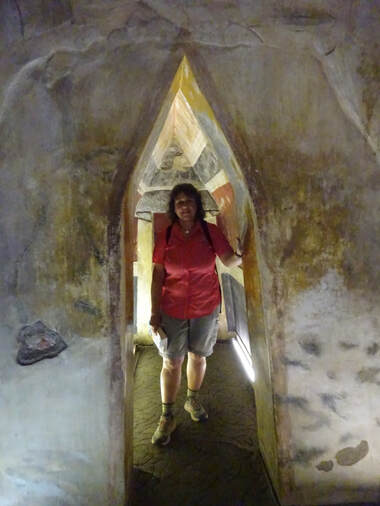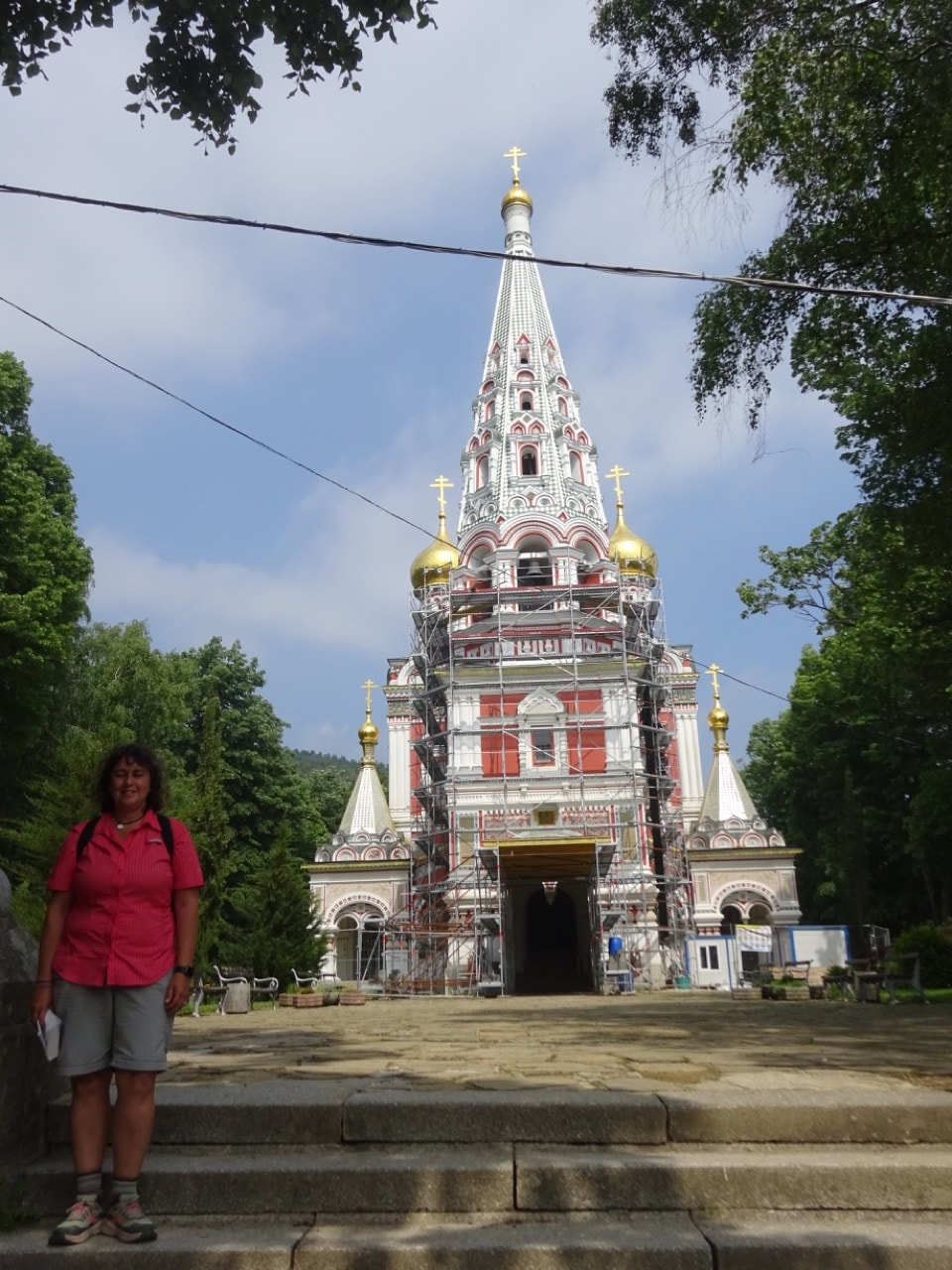Today is a drive about with stops at various assorted sights. The first stop was a tiny little tomb.
The Thracian Tomb of Kazanlak is a vaulted-brickwork "beehive" (tholos) tomb in the town of Kazanlak in central Bulgaria. The tomb is part of a large royal Thracian necropolis in the Valley of the Thracian Rulers near their ancient capital of Seuthopolis in a region where more than a thousand tombs of kings and members of the Thracian aristocracy can be found. This particular tomb has a narrow entry corridor and a round burial chamber, both decorated with murals representing a Thracian couple at a ritual funeral feast and dates back to the 4th century BCE.
The Thracian Tomb of Kazanlak is a vaulted-brickwork "beehive" (tholos) tomb in the town of Kazanlak in central Bulgaria. The tomb is part of a large royal Thracian necropolis in the Valley of the Thracian Rulers near their ancient capital of Seuthopolis in a region where more than a thousand tombs of kings and members of the Thracian aristocracy can be found. This particular tomb has a narrow entry corridor and a round burial chamber, both decorated with murals representing a Thracian couple at a ritual funeral feast and dates back to the 4th century BCE.
Visitors aren't allowed in the actual tomb, as the frescoes are too fragile. The tomb is protected by a building and climatic controls.
We did tour the replica nearby.
And then we headed up into some mountains over the Shipka Pass to see a recent monument to communism completed in 1981. Officially named the House-Monument of the Bulgarian Communist Party, but better known as the "Buzludzha Monument." After the fall of communism in 1989, the monument was left to decay.
The concrete letters are hung upon steel pins, so it appears looters have been plucking the low-hanging letter fruit over the years.
This thing is huge. People talk of restoring the structure for use as a museum, but access up the winding mountain road, and its remoteness will likely have it remaining as a forgotten ruin
Elvis (?) graffiti, and remnants of some concrete sculpture that appeared to be constructed of a very poor concrete mix with far too much aggregate stone.
The Memorial Temple of the Birth of Christ, better known as the Shipka Memorial Church or Shipka Monastery is a Bulgarian Orthodox church built near the town of Shipka between 1885 and 1902. The church is dedicated to the Russian, Ukrainian and Bulgarian soldiers that died for the liberation of Bulgaria in the Russo-Turkish War, 1877-78. The temple was officially opened on September 28, 1902. The opening and consecration of the Shipka Memorial Church coincided with the 25-year anniversary of the Battles of Shipka Pass. In 1970, the temple was proclaimed a national monument of culture.
The church's bell tower reaches a height of 174-feet and its bells, the heaviest of which weighs 12 tons, were cast from the cartridges that were collected after the battles. In the temple itself, the names of the Russian regiments and Bulgarian volunteers are inscribed on 34 marble plates. The remains of the perished are laid in 17 stone sarcophagi in the church's basement crypt.
The church's bell tower reaches a height of 174-feet and its bells, the heaviest of which weighs 12 tons, were cast from the cartridges that were collected after the battles. In the temple itself, the names of the Russian regiments and Bulgarian volunteers are inscribed on 34 marble plates. The remains of the perished are laid in 17 stone sarcophagi in the church's basement crypt.
Onward to complete the drive of the Shipka Pass. Shipka Pass (elev. 1150 m./3820 ft.) is a scenic mountain pass through the Balkan Mountains in Bulgaria. The pass connects the towns of Gabrovo and Kazanlak. The pass is 8 miles by road north of the small town of Shipka.
We saw several of these communist era sculptures along the way.
Finally, we visited Tryavna, famous for its textile industry and typical National Revival architecture, featuring 140 culturally valuable structures.





































 RSS Feed
RSS Feed
